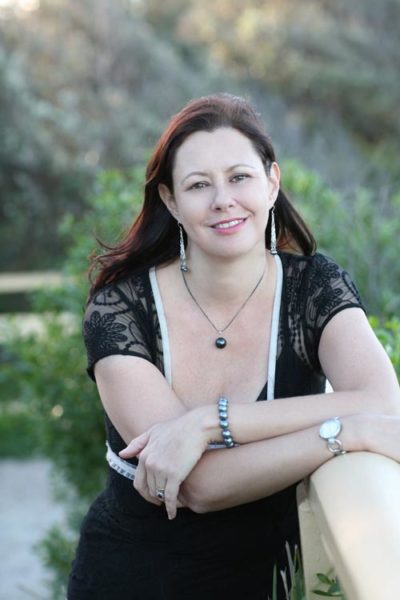 Kate Forsyth is one of Australia’s most beloved storytellers, having sold more than a million books worldwide. Her most recent book, Beauty in Thorns, is a reimagining of Sleeping Beauty set amongst the passions and scandals of the Pre-Raphaelites. This week, we talked to Kate about how writers can use archetypal characters and narratives like the Hero’s Journey to connect with readers.
Kate Forsyth is one of Australia’s most beloved storytellers, having sold more than a million books worldwide. Her most recent book, Beauty in Thorns, is a reimagining of Sleeping Beauty set amongst the passions and scandals of the Pre-Raphaelites. This week, we talked to Kate about how writers can use archetypal characters and narratives like the Hero’s Journey to connect with readers.
How do you know if you’re onto something magical with your manuscript?
I feel it in my skin and in my body. I get a shiver of goose-pimples, and a fizz of excitement in the pit of my stomach. The converse is also true. When a story is not working, I feel it in the sick knot of tension in my stomach, in the constriction in my throat. It’s my intuition trying to tell me that I need to keep on trying to find the true direction of the story.
What are archetypes? How can they be used to create a powerful story?
Archetypes are part of a universal symbolic language that – according to Carl Jung – all humans share. He called them ‘primordial images’, and believed that they arise from a ‘collective unconscious’ that is inherited from our ancestors. When we dream, or daydream, or create, or communicate, we instinctively draw upon these shared symbols and metaphors and archetypes to help us make sense of the world and to give our thoughts and actions greater meaning.
The term comes from the Greek, with the first element ‘arche’ signifying ‘beginning, origin, source of action, or the root of things’. By extension, it may also mean ‘first place or ‘first person, i.e. the ruler or leader.’ The second syllable ‘type’ comes from the Greek ‘typos’, meaning ‘a blow, dent, impression, mark or effect of a blow’ i.e. a figure in relief or an imprint of a coin.
By drawing upon these archetypal figures in our creative writing and storytelling, we can speak from our unconscious to the unconscious of the audience, imbuing our characters with greater symbolic power and emotional resonance.
The difficulty is making sure that our archetypes are not stereotypes!
Which quintessential ‘Hero’s Journey’ is your favourite example of the genre?
The classic novels and films which draw upon Joseph Campbell’s idea of the monomyth include Star Wars, Watership Down, and the Harry Potter books, all of which I love. J.R.R. Tolkien’s books The Hobbit and The Lord of the Rings are also often named as examples of the Hero’s Journey, even though the first was published 12 years earlier and the latter only 5 years later. I think this is important to remember, because many creative artists draw upon mythic structures and archetypes intuitively, due to their deep knowledge of mythic structures.
Stories which draw upon the Hero’s Journey do not need to be fantasy fiction, although this is a genre that loves a quest. Any story which explores somebody’s inner journey of transformation and self-discovery can be called a Hero’s Journey. The journey can be metaphorical or symbolic, as well as actual, and so this opens up the concept to all genres of fiction and non-fiction – in fact, to any type of story at all. So classic novels such as Pride & Prejudice by Jane Austen or To Kill A Mockingbird by Harper Lee can be seen to follow a monomythic structure of departure-initiation-return. It’s very liberating and exciting to understand how freely you can interpret and use the key aspects of the Campbellian Hero’s Journey in your own work – it is not a formula at all.
Kate Forsyth will teach two upcoming courses at Writing NSW in Callan Park:
Storytelling Magic will take place on Saturday 23 June, 10am-4pm.
Book now >
Blasting Through Writers’ Block will take place on Saturday 4 July, 10am-4pm. Book now >
